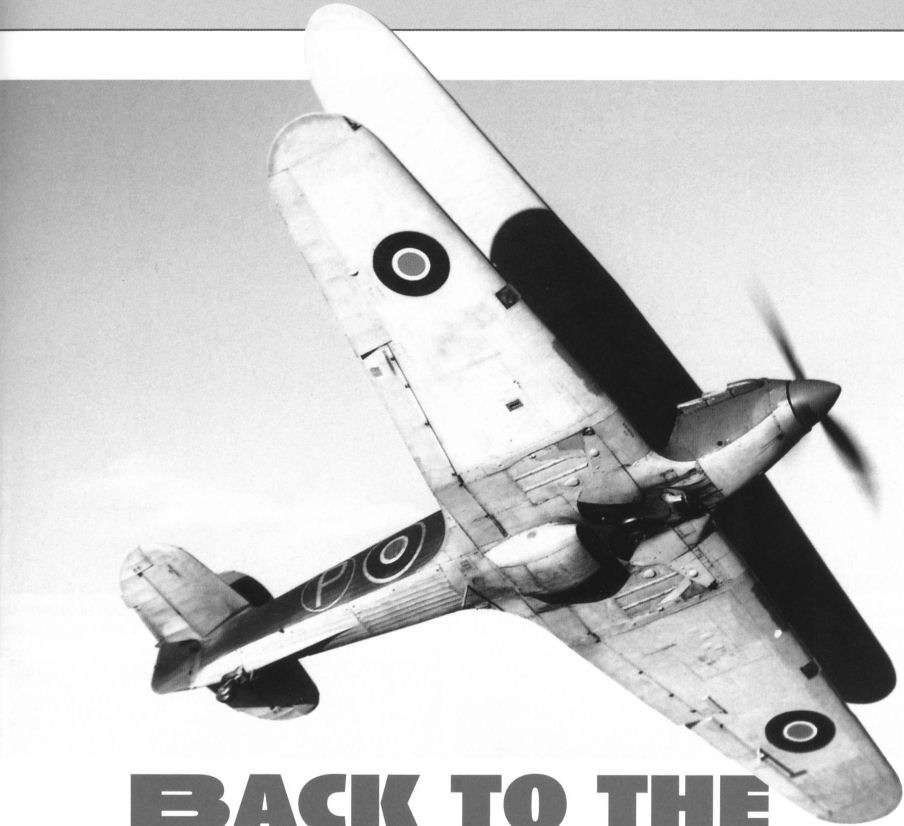
Варианты
- Hawker - Hurricane - 1935 - Великобритания
- Hawker - Hurricane IID / IV - 1941 - Великобритания
- Hawker - Sea Hurricane - 1941 - Великобритания
- Hillson - FH.40 Hurricane - 1942 - Великобритания
- Sindlinger - HH-1 - 1972 - США
Фотографии
-
Air Enthusiast 2003-09 / K.Ellis - Back to the biplane
Hurricane-биплан. Будучи относительно простым по конструкции, Hurricane являлся объектом для различного рода экспериментов, таких как установка крыла ламинарного профиля или создание буксируемого истребителя. Самым необычным оказался истребитель-биплан Hillson F.H.40 или Slip Wing Hurricane. Верхнее "вспомогательное" крыло позволяло ему взлетать с коротких аэродромов (после чего оно сбрасывалось) или служило в качестве дополнительного топливного бака в перегоночных полетах.
Fine view of the FH.40 Hurricane showing the add-on upper wing. -
Aeroplane Monthly 1991-01 / P.Jarrett - Nothing ventured... (10)
This flying shot of the Hurricane shows the similar planforms of upper and lower wings.
-
Aeroplane Monthly 1991-01 / P.Jarrett - Nothing ventured... (10)
An air-to-air front view of the slip-wing Hurricane, showing the large gap and the absence of any bracing outboard of the centre-section.
-
Aeroplane Monthly 1991-01 / P.Jarrett - Nothing ventured... (10)
The slip-wing Hurricane in flight as a biplane. The upper, auxiliary wing was never jettisoned in the air, but the Hurricane handled well with the extra wing area and was tested at up to 300 m.p.h.
-
Air Enthusiast 2003-09 / K.Ellis - Back to the biplane
The FH.40 in flight.
-
Aeroplane Monthly 1998-12 / D.Webb - The unsung gallants /Test flyers/ (2)
One of the more curious types flown by Sqn Ldr A.D. Miller was the unique slip-wing Hurricane, which was flown only in its biplane form.
Hurricane 321's slip wing was an all-wooden, expendable structure built around two box spars and skinned with ply. It more than doubled the aircraft’s wing area, and was intended to enable the fighter to take off with a vastly increased fuel load, thereby increasing its range for long-distance ferry flights. Had the slip-wing concept been a success, sights like this would have been common and discarded wings would have been fluttering down all over the place. As it was, the external fuel tank proved a much more sensible proposition, both practically and economically. -
Air Enthusiast 2003-09 / K.Ellis - Back to the biplane
View of the FH.40 at rest. Note the relatively large separation of upper and lower wings.
-
Aeroplane Monthly 1991-01 / P.Jarrett - Nothing ventured... (10)
The slip wing was supported on N-struts which engaged with release gear within the lower centre-section/outer wing panel joints. Sideways movement was prevented by two bracing struts between the upper wing and the fuselage. All the struts were designed to be jettisoned in company with the upper wing.
-
Aeroplane Monthly 1991-01 / P.Jarrett - Nothing ventured... (10)
The Canadian serial 321, just visible on the original of this photograph, led to the Hurricane being confused with RAF aircraft AG321 throughout its experimental career. Its original British serial number was L1884.
-
Aeroplane Monthly 1991-01 / P.Jarrett - Nothing ventured... (10)
A front view of the aircraft, probably at Boscombe.
-
Air Enthusiast 2003-09 / K.Ellis - Back to the biplane
Hillson FH.40 'Slip-wing' Hurricane.












